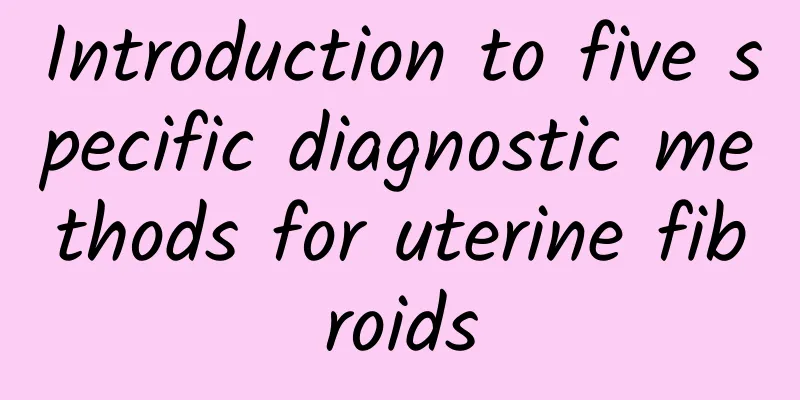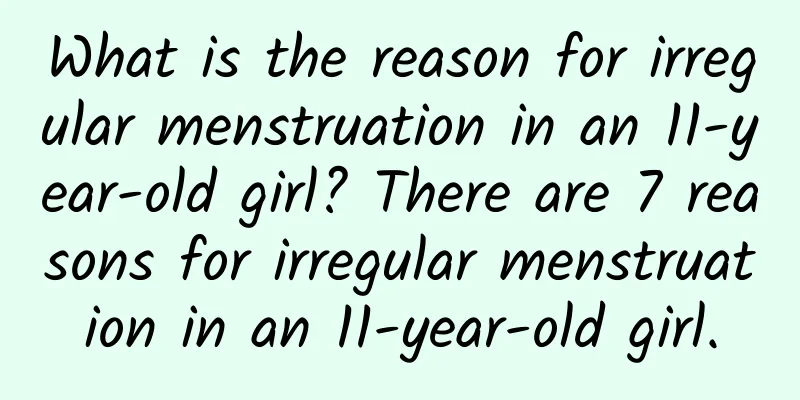Introduction to five specific diagnostic methods for uterine fibroids

|
With the advancement of modern medical technology, some relatively advanced diagnostic methods for uterine fibroids have emerged, which can help patients with uterine fibroids to determine their condition in a timely manner and receive more scientific treatment. What are the specific diagnostic methods for uterine fibroids ? Let's talk about the specific diagnostic methods for uterine fibroids. Generally, the specific diagnostic methods for uterine fibroids are: Plain X-ray: When the fibroids are calcified, the diagnosis of uterine fibroids is manifested by scattered consistent spots, or a shell-like calcified capsule, or a honeycomb with rough and wavy edges. Diagnostic curettage: Small submucosal fibroids or dysfunctional uterine bleeding, endometrial polyps are not easy to detect with bimanual examination, and curettage can be used as one of the methods for diagnosing uterine fibroids. If it is a submucosal fibroid, the curette will feel a convex surface in the uterine cavity, which will rise up and then slide down, or you will feel something sliding in the uterine cavity. Hysterosalpingography: Ideal hysterosalpingography can not only show the number and size of submucosal fibroids, but also locate them. Therefore, it is very helpful for the diagnosis of early uterine fibroids of submucosal fibroids, and the method is simple. Contrast film of the fibroids shows that there is filling and incompleteness in the uterine cavity. CT and MRI: They are both good diagnostic methods for uterine fibroids. When CT is used to diagnose fibroids, its images only express the details within a specific layer, and the image structures do not overlap. The CT image of a benign uterine tumor is an increase in volume. Ultrasound examination: B-ultrasound examination is more common in China. Differentiating fibroids, the diagnosis of uterine fibroids can show the enlargement of the uterus, irregular shape; the number, location, size of the fibroids, whether the fibroids are uniform or liquefied cystic, etc.; and whether there is compression of other organs around them. The above is an introduction to the specific diagnosis methods of uterine fibroids. I believe everyone should know about it. Once diagnosed with uterine fibroids, you must go to the hospital in time to actively receive treatment in order to effectively alleviate the condition, which is beneficial to your health. |
<<: Introduction to several common symptoms of uterine fibroids
>>: Analysis of the most effective treatment methods for uterine fibroids
Recommend
It’s not intentional~Fat people always move too little, which is actually related to abnormalities in the dopamine system!
We know that exercise can improve health and brin...
Mouth sores not only cause a lack of B vitamins, but also cause a large leakage of these 3 nutrients! Nutritionist: Avoid eating 5 types of foods that irritate mucous membranes
Everyone has experienced the pain of a sore mouth...
Can abnormal leucorrhea indicate pregnancy?
Abnormal leucorrhea is not directly related to pr...
Do you have to sweat profusely to lose weight? Doctor Song Yanren: Niya dance can help you lose weight easily
There is no shortcut to losing weight, but you ca...
Abdominal pain, uterine fibroids, what to check for color Doppler ultrasound, uterine fibroids, can abdominal B-ultrasound be used to detect them?
Abdominal pain is a common phenomenon and may be ...
How to use medication for uterine fibroids? What are the hazards of medication for uterine fibroids?
With the development and progress of medicine, th...
What are the pre-abortion screening measures?
Abortion is very common in today's society. B...
Can vulvar pruritus be treated?
Vulvar pruritus can be treated, but the treatment...
Do you need to take folic acid during menopause? Exercise properly
In fact, folic acid tablets can be taken during m...
Will cervical erosion affect fertility? Analysis of the causes of infertility caused by cervical erosion
Many people may not know that cervical erosion wi...
Positive, optimistic, confident: the psychology of painless abortion
There are both positive and negative reports on a...
Prevention of vaginitis requires good hygiene habits
With the improvement of living standards, the dem...
Is the Lip Knife effective in treating cervical erosion? 4 Advantages of Lip Knife Surgery for Cervical Erosion
Nowadays, women pay less and less attention to th...
What should patients with adenomyosis do if they want to have children?
Adenomyosis is not unfamiliar to everyone. It usu...
What are the dangers of abnormal leucorrhea?
What are the dangers of abnormal leucorrhea? The ...






![[Your own health is your own decision - Eat and move campaign] Whoo Post Cleansing Milk Award Winners Announced](/upload/images/67dcfdda47a56.webp)


